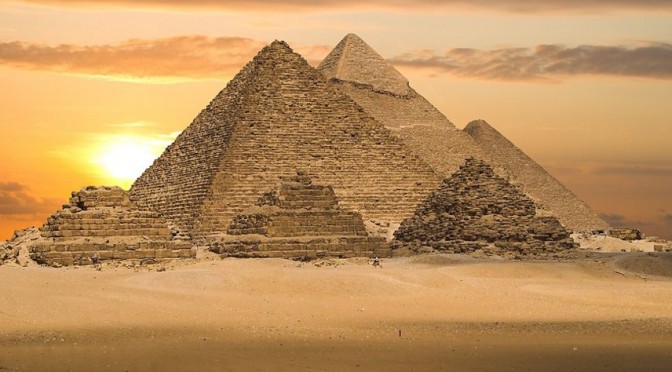At the time of Jesus’ teaching, Isis had been worshipped in Egypt for well over 4000 years. Egyptian records are verifiable nearly as far as that. Much of our information comes from the historians who worked in Egypt before the time of Jesus and was transferred to Greece and Rome. A large proportion comes directly from monuments and graves. Confidence in the validity of the information has increased with ongoing investigations and carbon dating confirming earlier findings. However the Egyptian civilisation could not have started with the first recorded dynasty there must have been something before that. This leads into an area of pure speculation.
Isis
Worship of Isis did not stop at the time of Jesus. In parallel with the growth of Roman Christianity another faith was growing strongly in the Roman Empire. The godhead in this faith was not a man, but a woman – Isis the God of Egypt. No that is not a mistake I chose the word God deliberately. This faith had a family of gods which incorporated a mystery. Isis was both the daughter and the mother of the gods! in her alter ego Amunet she was at one with Amun and therefore mother and father to her descendants. It was as late as 490AD when the worship of Isis was finally stamped out by an ever more powerful Roman Church. A special point was made of establishing churches dedicated to the Virgin Mary in or on the site of temples to Isis,
Holy Mother
One of the enduring images of Isis is her nursing Horus, who was the first Pharoh .
The imagery is strikingly similar to the images of Mary and Child which were used by the early Christians and are still in use today. Despite the similarity it must be emphasized that Isis was not only Horus’ mother but also the godhead of the Egyptian religion, who was superior (had control of) all the other gods.
Messalina
Amazingly there is another almost identical image to be found in the Louvre. This statue was apparently previously the property of Henry IV and was probably brought by him from Languedoc when he assumed the Throne of France.
This is neither Iris nor Mary but the Empress Messalina holding her son Britannicus. Messalina’s husband and Britannicus’ father was the Emporer Claudius. She lived at a time when there was a great competition between the religion of Isis and Chistianity for adherents within the Roman Empire. We can assume that she played an important part in the politics of her time as she was dismissed by later Christian writers as a prostitute. It requires great inventiveness to label an empress as a prostitute. She apparently volunteered to work in a brothel in secret as a hobby!
My children
Another surprise is that the Phraohs of Egypt who considered themselves Gods refererred to their human subjects as “my children”. We all know one of Jesus’ most famous sayings “Suffer the little children to come unto me, and forbid them not: for of such is the kingdom of God” The new testament interprets this as a reference to very young people but perhaps not!
Is it possible that Jesus’ message was more concerned with the religion of Egypt than the faith of the Jews, but that after his death it all became confused? If this is so, why did he choose to launch his message in Judea, home of the most intractable faith of the ancient world?
Racial Purity
The Egyptians believed that the first Pharoh was born of Isis and was a God himself. The whole ruling structure of Pharohs, Priests and Administrators saw themselves as as “Gods”. They were determined to retain their racial purity. This initially meant that they did not inter-marry with their subjects. We now move out of the area of pure speculation and into the area in which there are surprisingly detailed records. A programme of line breeding for rulers and priests. Brothers married sisters, uncles married nieces.
Matriachal Society
There seems to have been an attempt to emulate as closely as possible the mystery of the geneology of Isis herself. So much time and effort was put into the control of the breeding program that we can assume that if a Pharaoh took a partner who appeared to have no pedigree it simply meant that that person was introduced from a secondary level less well documented. Even this occurs infrequently. All inheritance rights, including the right to rule, came through the mother. Perhaps because of this the Egyptian state was notable for its policies of equal opportunity and equal pay for women.
Set
In Egypt, There was always the concept of the good god personified by Isis and the bad god personified by Set. The Hyskos, a people who moved into the nile delta, possibly driven from the Sahara by changes in climate, in time set up a completely separate nation which came to be in conflict with the rulers of upper Egypt. In Egyptian history there a shown as a separate dynasty. The Hyskos,developed and retained worship of Set, after all it was set who created every difficulty face by their neighbours. In the rest of Egypt the dominance of Isis was undiminished. Core Egyptian beliefs continued to encourage the equality of women.
Good and Evil
Initially to the Egyptians Set was the god of chaos. However there was a change. The difference in beliefs between upper and lower Egypt probably gave rise to the emergence of a belief in a struggle between good and bad gods competing for the hearts and minds of the human race.
